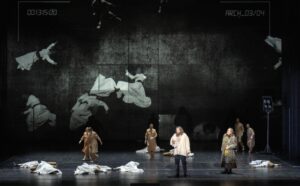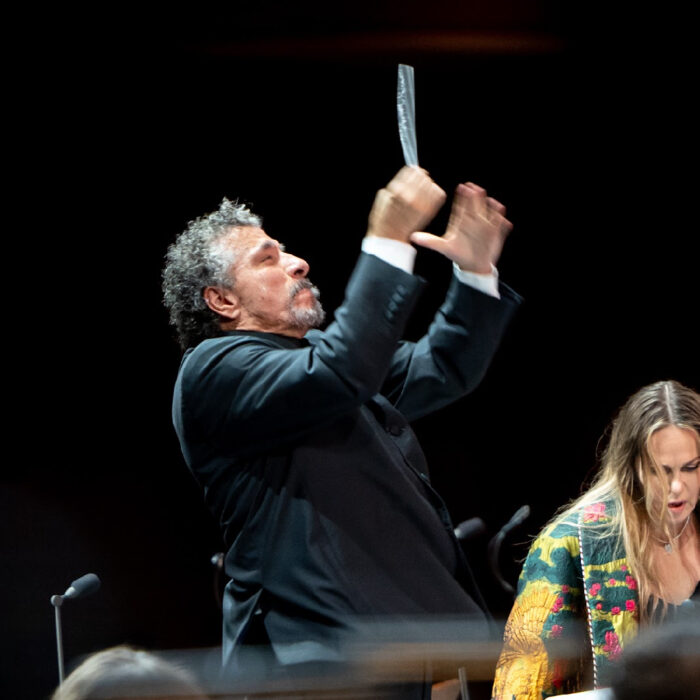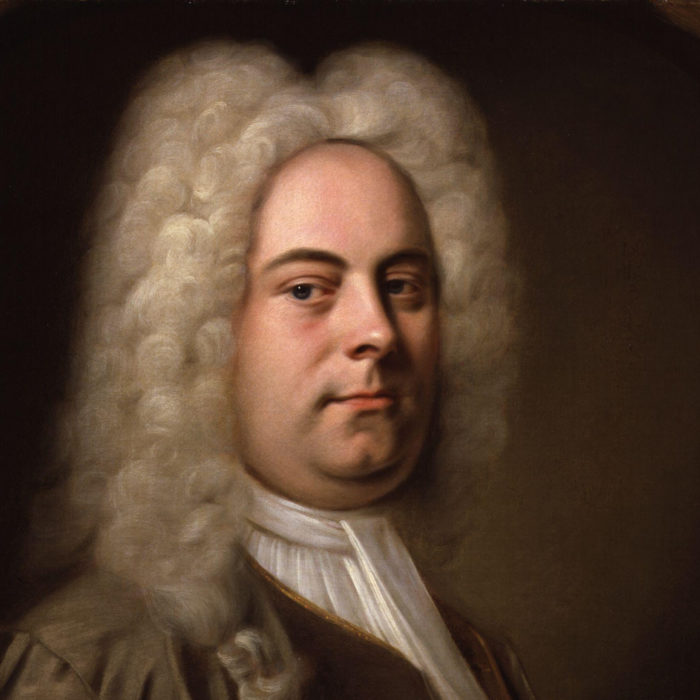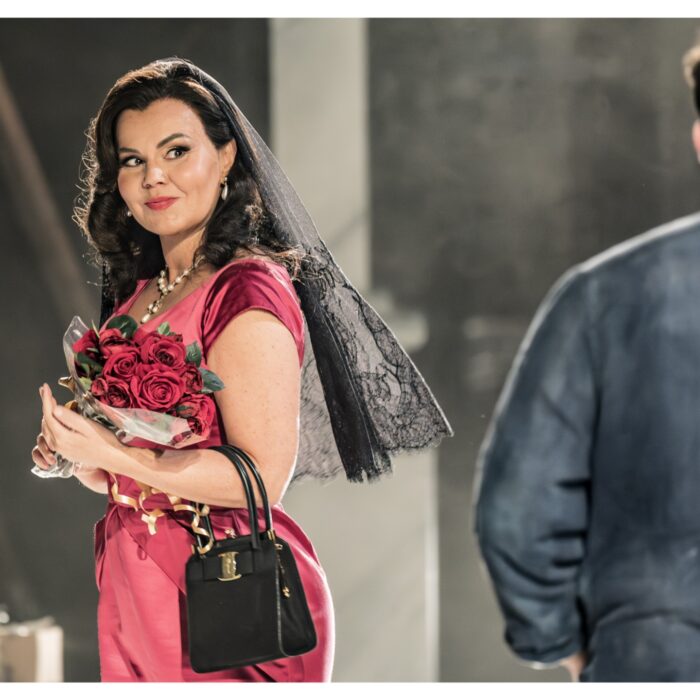
Staatsoper Berlin 2024 Review: Khovanshchina
By Zenaida des Aubris(Photo: Monika Rittershaus)
Due to the pandemic, the new production of “Khovanshchina” planned for 2020 could only be realized this season at the Staatsoper unter den Linden. Now, Modest Mussorgsky’s monumental, melancholy music unfolds in all its splendour, not least thanks to the phenomenal performance of the chorus.
“Khovanshchina” is an unfinished opera in five acts by Modest Mussorgsky, which thematizes the historical drama surrounding the Khovanchy conspiracy in 17th century Russia, when political intrigues and religious tensions within the Orthodox Church shook Russia. Mussorgsky himself wrote the libretto, which is based on actual historical events.
The opera begins during the time when the conflict between the reformed and the old-faith Russians is brewing. Vasily Golitsyn, a progressive duke, and duke Khovansky, leader of the Old Believers, are the two central figures in this conflict. Khovansky uses the dissatisfaction of the people and the Strelitz, an elite military unit, to expand his power. Marfa, the former lover of Khovansky’s son and a supporter of the Old Believers, prophesies doom for Russia.
In the course of the opera, intrigues and power struggles are fought out. Golitsyn plots to undermine Khovansky’s influence, while Khovansky attempts to secure his position through violence and terror. The plot culminates in a dramatic climax when Khovansky is murdered by the tsar’s troops. The Strelitz are suppressed and the power vacuum leads to further political and religious instability. In a highly symbolic ending, Marfa and the prince’s son decide to remain true to their faith and commit suicide by allowing themselves to be immolated.
Stage director Claus Guth was able to draw on his previous collaboration with Simone Young for this production. They know each other from Hamburg and have produced a “Ring” together. This familiarity is palpable and visible in the realisation of the concept, which is partly historicised and partly set in the present day. The action on stage begins and ends like a parenthesis with a scene in the supposedly private office of the current ruler, in front of a larger-than-life statue of Peter the Great, an imposing desk, writing materials – even a water bowl for the dog has been thought of – when a private secretary sets out documents for signature and collects them again at the end. Case closed?
Stage designer Christian Schmidt creates much more than this elegant office – mobile modules open up, sometimes showing a princely antechamber, sometimes a magnificent salon, but also dark, empty stages that give the choir and soloists the space they need to unfold their actions. Schmidt uses the hydraulic possibilities of the stage to allow the large chorus to emerge from the lower stage or to be lifted upwards. Although this makes an impression, it is not absolutely dramaturgically necessary. Ursula Kudrna gives the historical figures of the main actors equally splendid costumes, but has the chorus appear in timeless, drab grey and black – this emphasizes the difference in ruling and working class all the more. The emptier the stage is of props, the stronger the effect of Roland Horvath’s video projections, which provide a contemporary counterpoint to the musical and dramatic action with images from current news coverage. An operator with a live camera follows individual performers on the stage, and makes the audience further focus its attention on present events. The growing up of the future Peter the Great – just a boy of 10 at the time of the action, subsequently a teenager – is repeatedly shown with the simple and universally old-fashioned method of a chalk line over his head.
Mussorgsky’s depiction of a turbulent chapter in 17th century Russian history can be interpreted as the starting point and justification for Tsar Peter the Great’s seizure of power. Claus Guth introduces a fictional group of technicians in laboratory suits to create a relative distancing of the historical images. During the overture, one of these technicians writes plot’s prologue on a laptop at his standing desk, which is then beamed onto a screen. Thus he introduces the roles and their political relationship to each other, thus establishing a most useful context. Claus Guth’s production respects the complexity of the original and emphasizes the incomplete and fragmentary in order to create a coherent work of art.
Musically, “Khovanshina” is defined by Mussorgsky’s characteristic harmonies and his ability to integrate Russian folk melodies and liturgies into the work. Mussorgsky was unable to complete the opera due to his death in 1881. The version performed here is that of Dmitri Shostakovich, with the finale by Igor Stravinsky. With all the often melancholy melodies, conductor Simone Young allows the Staatskapelle to unfurl its full splendour of sound and ensures the right balance between pit and stage.
The main roles stand out in their musical and dramatic importance. Finnish Bass Mika Kares, probably the most important current successor to Matti Salminen and Matti Talvela, embodies Prince Ivan Khovansky with overwhelming realism, both vocally and dramatically. Tenor Stephan Rügamer is equally steely and stubborn in the role of Prince Vasily Golitsyn – one suspects that these two opponents will only give in at death. Marina Prudenskaya is a Marfa who touches with her velvety mezzo and who accepts her faith and fate with equal dignity and pride; bass Taras Shtonda with his melodious bass is ideally cast as Dossifei, head of the Old Believers, who defends his unshakeable faith with great conviction. As Khovansky’s son Andrei, Najmiddin Mavlyanov, with his nasally penetrating timbre, makes this character even less likeable than he already is. Baritone George Gagnidze fulfils the role of the Boyar Shaklovity with a self-confident, imposing presence.
“Khovanshina” is rich in choral numbers which intensify the emotional and political atmosphere. Among the most significant choral scenes are the prayers of the Old Believers, the martial performances of the Strelitzes and the moving laments of the people, which express their despair and hopes. Choirmaster Dani Juris – who has only been at the State Opera since this season – has taken the chorus to its next level of excellence, emphasizing its outstanding musicality, sensitivity and precision. All these elements came to bear in this difficult work.
There was a second of devout silence after the last chord before the audience broke into overwhelming applause for all the performers.



